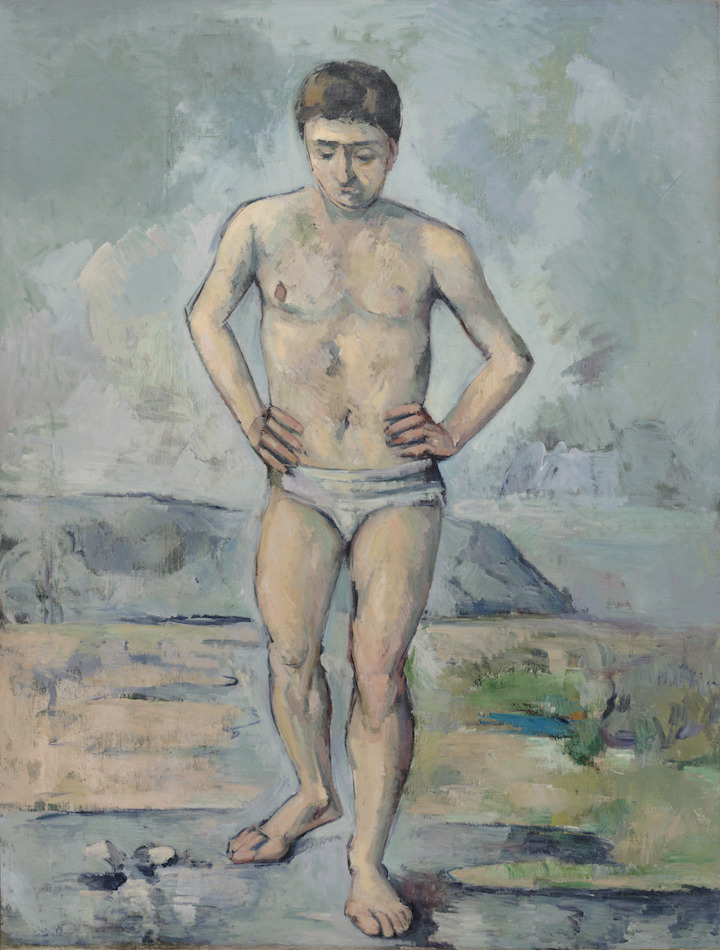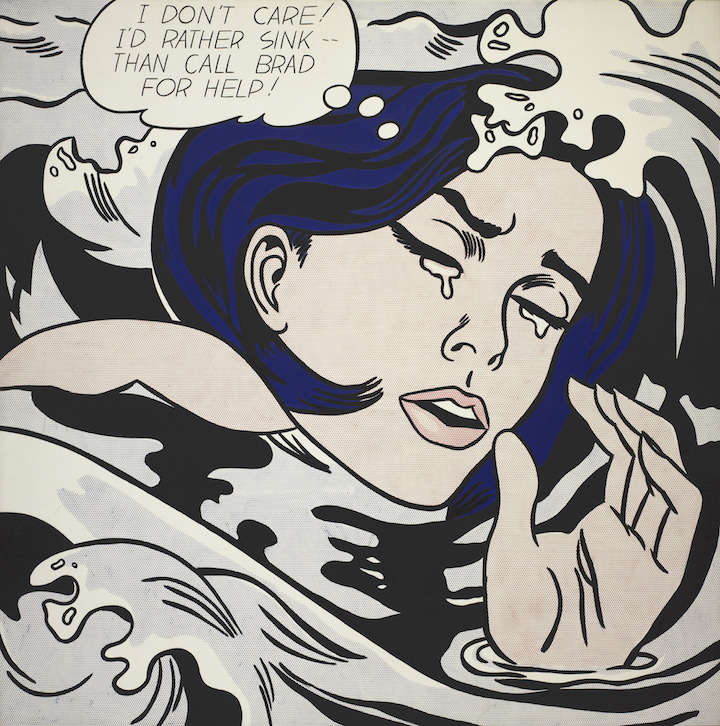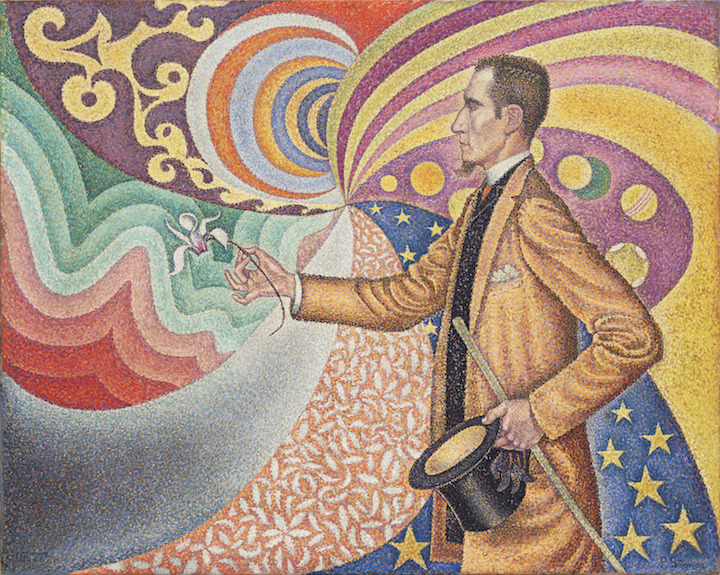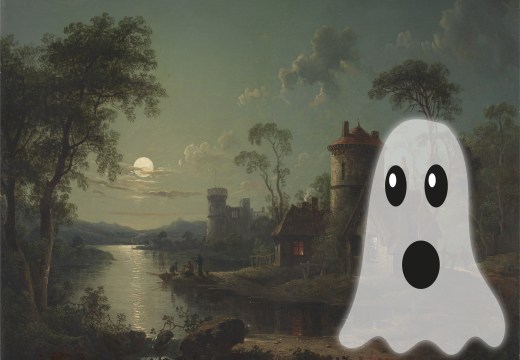‘Being Modern’ is the fruit of a grand transatlantic partnership between New York’s Museum of Modern Art and Paris’s Fondation Louis Vuitton. As work progresses on MoMA’s new extension, some 200 items from the collection have made the journey across the ocean, many of them back to their country of birth. The exhibition aims to mark the Fondation’s entry into the first rank of the world’s art museums, but also, in this most modern of buildings in one of Europe’s most venerable cultural capitals, to celebrate and interrogate what it means to be modern. The result is a curious show that, for all its grandeur, left me strangely disappointed.
There is no denying the quality of the works on display – or the achievement in getting MoMA to lend them. This is a show of the museum’s Greatest Hits, with a few deep cuts thrown in for good measure. Downstairs is dominated by the early masterpieces of European modernity: Cézanne’s Le Bagineur (c. 1885) and Picasso’s Jeune garçon au cheval (1905–06) hang a few feet from de Chirico’s Gare Montparnasse (1914) and Matisse’s Poisson rouge et Palette (1914). Then the focus shifts to America with works by Rothko, Pollock, Newman, Lichtenstein, Warhol and more. Alongside these hang examples of early 20th-century industrial design, propaganda posters and even industrial fittings, while the films Steamboat Willie and Battleship Potemkin play nearby. Exhibitions within the exhibition, meanwhile, chart MoMA’s institutional history and development and the stages by which it both collected and created ‘modern art’.

The Bather (c. 1885), Paul Cézanne. Courtesy of the Museum of Modern Art, New York
The newer, more eclectic upper floors push deeper into interdisciplinarity and promote MoMA’s continuing commitment to collect, construe, and construct modernity – especially by looking beyond ‘art’ to find art. The striking displays include a gorgeous charcoal sketch for an office building, by Mies van der Rohe, overlooked by an imposing section of the steel and glass façade of the 1952 United Nations Secretariat building. It is a superb juxtaposition, especially with Lygia Clark’s Contra Relevo no.1 (1958) nearby.
But, like many a Greatest Hits album, there is something oddly unsatisfying about ‘Being Modern’. It is, despite the deliberate eclecticism, all a little too familiar, and even the best works are somehow diminished as a result. And beneath all the interdisciplinary thrust lies a mildly disturbing current of trivialisation: a desperation to stay up to date that deepens the higher you climb through the Fondation’s galleries. While it is mildly cool to put the @ sign in a gallery, and ditto Space Invaders, the museological compression necessary to fit everything in makes for some uncomfortable bedfellows. Steamboat Willie is not of a kind with Max Beckmann’s Departure triptych (1923, 1933–35); nor are emoticons, despite belonging to the world of typography, of a kind with Félix Gonzáles-Torres’s chastening, salutary AIDS wallpaper General Idea (1989).

Drowning Girl (1963), Roy Lichtenstein. © Estate of Roy Lichtenstein New York, Adagp, Paris 2017
That said, there are moments of wonder here. I lingered for a long time in front of the selection of Kurt Schwitters’ Merz collages, which I had never seen in the flesh. And upstairs, Roman Ondák’s Measuring the Universe was beginning to turn one of Frank Gehry’s light-filled side-rooms into a hand-written record of the heights of all the visitors to the exhibition so far. It is a simple piece, but fun, and very lightly profound: the scattered selection of lines and names around the walls are coalescing slowly but surely into a surprisingly thin band – recording just how small a range we humans represent, for all our differences.
The finest piece, though, and the one which most successfully interrogates the notion at the heart of the show, is Janet Cardiff’s Forty-Part Motet (2001). Given the elevated company, that is quite an accolade, but it is both the most unexpected thing on show and the most beautiful. At its heart is a simple idea: to take something old and make it new. Its material is Thomas Tallis’s Spem in alium, a complex choral work now nearly 450 years old. With its 40 separate vocal lines, the motet one of the masterpieces of its age; all Cardiff does is separate its voices through 40 speakers, and let the visitor bathe in the sound. The smallest movement of the head alters the experience, changes the voices that come to the fore, and turns listening into a constantly shifting physical experience. It is the oldest thing here, and for my money the most modern too; it effortlessly soars away not just from typography and computer games, but from the new-old masters of European modernism.
‘Being Modern: MoMA in Paris’ is at the Fondation Louis Vuitton, Paris, until 5 March 2018.
Unlimited access from just $16 every 3 months
Subscribe to get unlimited and exclusive access to the top art stories, interviews and exhibition reviews.














![Masterpiece [Re]discovery 2022. Photo: Ben Fisher Photography, courtesy of Masterpiece London](http://www.apollo-magazine.com/wp-content/uploads/2022/07/MPL2022_4263.jpg)
Why are fathers so absent from art history?